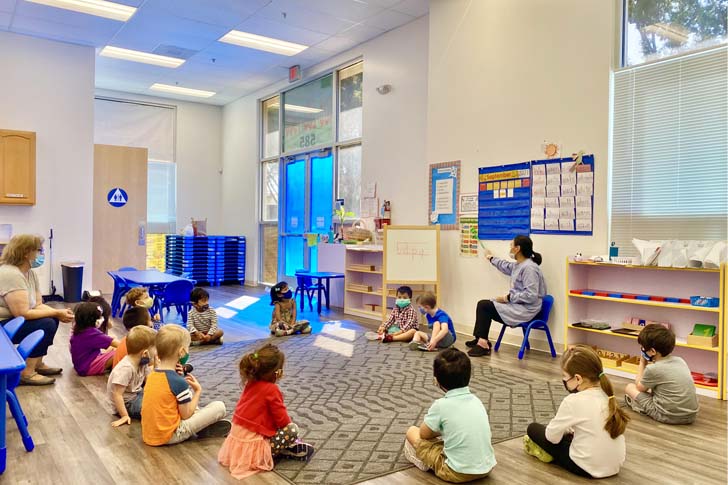How to Find a Good Preschool in the USA?
Choosing a preschool for your child is a significant decision that can impact their early development and readiness for kindergarten. This article aims to guide you through the process of selecting a preschool that meets your expectations and suits your child’s needs. We’ve carried out detailed research to ensure the information presented is helpful and actionable.

Understanding Preschool Education in the USA
Preschool, also known as nursery school or pre-k, is an educational establishment or learning space offering early childhood education to children before they begin compulsory education at primary school. It may be publicly or privately operated, and may be subsidized from public funds.
In the United States, preschools are not governed by a single national standard but rather by state regulations. This means that the quality and focus of preschool education can vary widely from one state to another. However, there are common threads in what defines a quality preschool, including curriculum standards, teacher qualifications, and learning environment.
Key Factors to Consider When Choosing a Preschool
- Educational Philosophy and Curriculum:
- Play-based vs. Academic: Some schools offer a play-based learning environment that emphasizes children learning through play. Others may adopt a more structured academic approach that focuses on preparing children for the rigors of formal schooling.
- Montessori, Waldorf, and Reggio Emilia: These are some of the established educational philosophies that you might encounter. Montessori schools, for example, focus on individualized learning and hands-on activities that encourage children to learn at their own pace.
- Location and Hours:
- The location should be convenient for your daily routine, considering proximity to your home or workplace.
- Consider the school’s hours and whether they align with your schedule. Some preschools offer extended care hours to accommodate working parents.
- Staff Qualifications:
- Look into the qualifications of the preschool staff. Teachers should have at least an Associate’s degree in early childhood education or a related field. Some states and programs might require further certification.
- Pay attention to the teacher-to-child ratio. A lower ratio is often indicative of more personalized attention and a better learning environment.
- Safety and Facility Quality:
- Ensure that the preschool complies with safety standards. This includes clean facilities, safe play equipment, and secure premises.
- Visit the school to observe if the environment is stimulating and suitable for children. Look for a variety of materials and books that are accessible to children.
- Reputation and Feedback:
- Seek feedback from other parents about their experiences with the preschool. Parent testimonials can provide insights into the day-to-day operations and culture of the preschool.
- Online reviews and ratings can also be a useful source of information, although they should be taken with a grain of caution as they can be subjective.
- Licensing and Accreditation:
- Check if the preschool has the necessary licensing from the state. This ensures that the school meets minimum standards of care and education.
- Accreditation from organizations like the National Association for the Education of Young Children (NAEYC) is a good indicator of quality and adherence to high standards.
Practical Steps to Choosing the Right Preschool
- Identify Your Priorities:
- Before you start looking, decide what aspects of a preschool are most important to you. Is it the educational philosophy, the location, or the class size? Knowing what you prioritize can help narrow down your options.
- Research and Compile a List:
- Start by compiling a list of preschools in your area. You can use online directories, recommendations from friends and family, and local parenting forums.
- Visit and Observe:
- Arrange visits to each preschool on your list. Observe a class in session if possible. Pay attention to how the teachers interact with the students and whether the children seem engaged and happy.
- Ask Questions:
- During your visit, ask questions about the curriculum, teacher qualifications, safety procedures, and anything else that concerns you. How a school responds to your queries can also be an indicator of their communication and transparency.
- Evaluate and Decide:
- After visiting the schools and gathering information, it’s time to evaluate your options. Discuss with your family and consider all factors, including your child’s needs and personality.
Conclusion
Finding a suitable preschool requires time and effort, but it’s worth it to ensure your child receives a good start in their education. By focusing on the quality of the curriculum, the professionalism of the staff, and the overall environment, you can make an informed decision that benefits your child’s growth and development. Remember, the goal is to find a preschool where your child will be happy, safe, and well-prepared for the years ahead in their educational journey.







Recent Comments